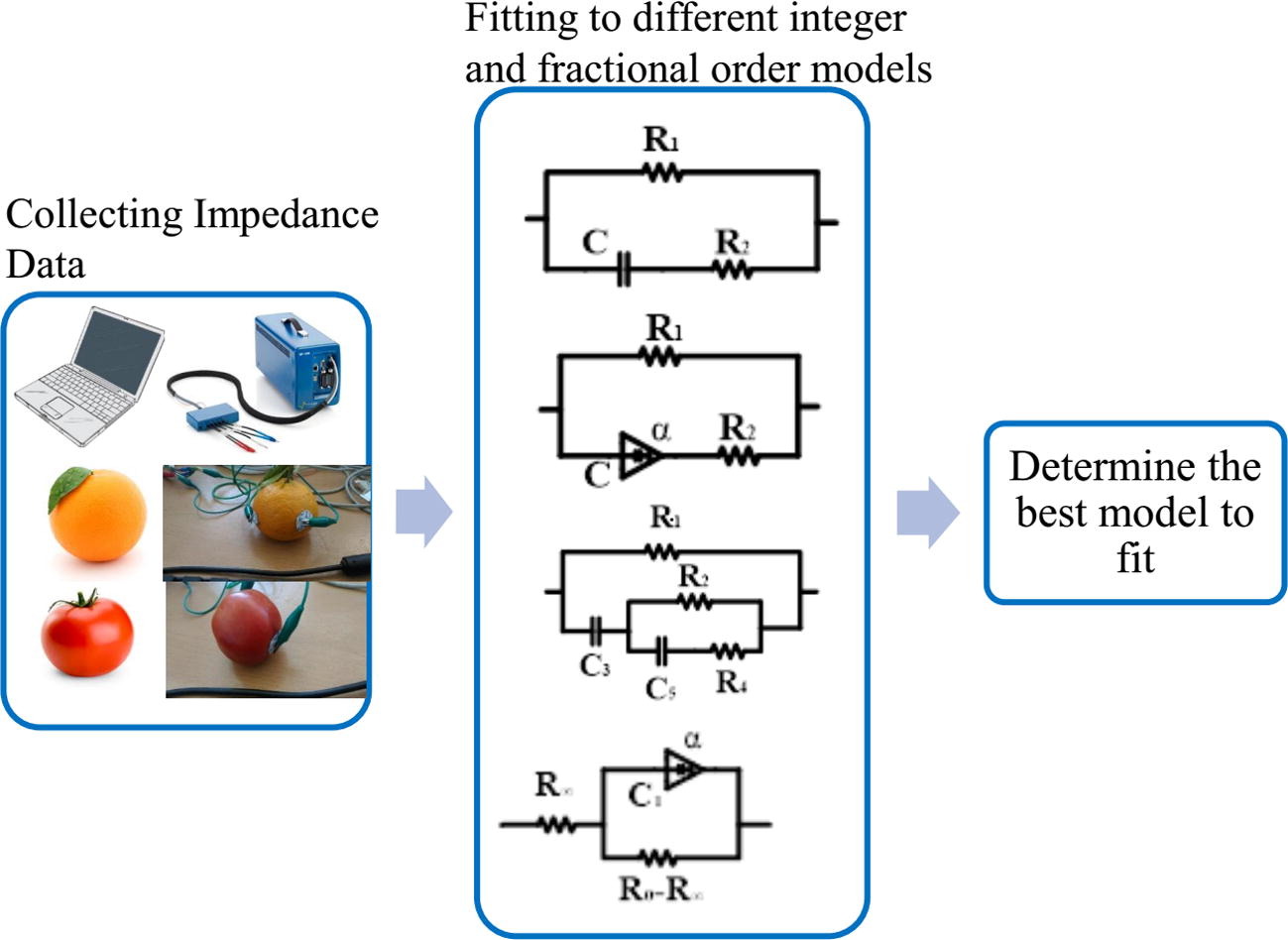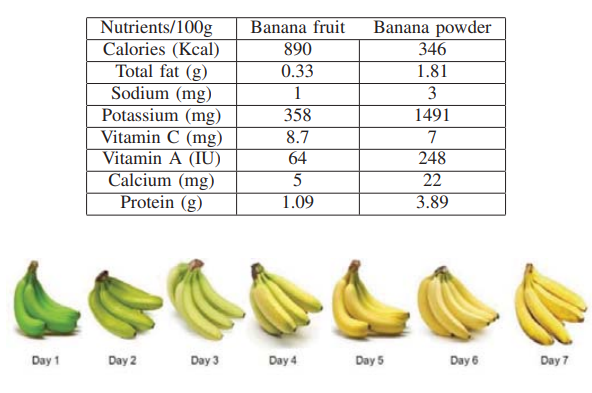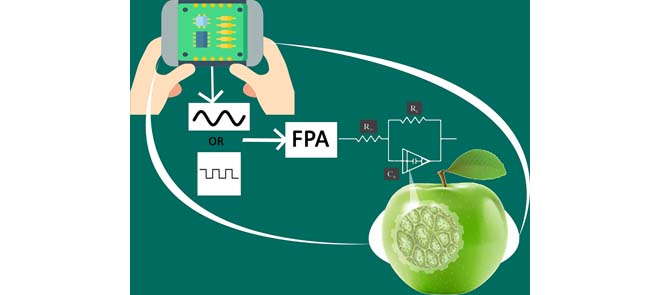Cole bio-impedance model variations in daucus carota sativus under heating and freezing conditions
This paper reports on the variations in the parameters of the single dispersion Cole bio-impedance model of Daucus Carota Sativus (carrots) under heating and freezing conditions. Experiments are conducted on six samples with recorded live bio-impedance spectra versus temperature. The Cole model parameters are extracted from the measured data using the Flower Pollination Algorithm (FPA) optimization technique and their variations are correlated with well-known bio-chemical and bio-mechanical variations. This represents a non-invasive method for characterizing and measuring the degree of change

Experimental investigation of innovative active packaging biofilms using electrical impedance spectroscopy
Extending the double-dispersion Cole–Cole, Cole–Davidson and Havriliak–Negami electrochemical impedance spectroscopy models
Double-dispersion impedance models are important for the accurate fitting of spectral impedance measurements in Electrical Impedance Spectroscopy (EIS). While the Cole–Cole model is the most widely known, it is possible to define double-dispersion Cole–Davidson and Havriliak–Negami models as well. In this work, we show that more freedom can be exercised when these three models are combined together and that this combination can be done in various forms. Experimental results using a two-stage optimization algorithm applied on the suggested models are provided. © 2021, European Biophysical
Extraction of Phase Information from Magnitude-Only Bio-impedance Measurements Using a Modified Kramers–Kronig Transform
The need for portable and low-cost bio-impedance analyzers that can be deployed in field studies has significantly increased. Due to size and power constraints, reducing the hardware in these devices is crucial and most importantly is removing the need for direct phase measurement. In this paper a new magnitude-only technique based on modified Kramers–Kronig transforms is proposed and tested. Comparison with impedance measurements of fresh and aging tomato samples using a precise industry standard impedance analyzer is carried out and explained. Error and noise analysis of the proposed

Experimental comparison of integer/fractional-order electrical models of plant
In this paper, different integer and fractional-order models are studied from electrical point of view, these models are used to fit the measured impedance data for different types of fruits and vegetables. Experimental work is done on eight different models for six types of fruits to verify the best fitting model. Electric impedance is measured in the range of frequencies (200 mHz–200 Khz) using a non-destructive method, where the tissues are not damaged by electrode insertion. Moreover, two integer order models have been extended to the fractional order domain where data analysis and fitting
Extraction of bioimpedance phase information from its magnitude using a non-uniform Kramers–Kronig transform
A novel non-uniform Kramers–Kronig Transform algorithm for bioimpedance phase extraction is proposed and tested in this work. The algorithm error is studied and compared with a previously proposed phase extraction technique, also based on the Kramers–Kronig transform. Results using simulated datasets and experimental datasets confirm the excellent performance of the algorithm. © 2020, European Biophysical Societies' Association.

Banana ripening and corresponding variations in bio-impedance and glucose levels
This paper studies banana fruit ripping using the Cole-impedance model fitted over the measured bio-impedance data by monitoring the changes in the model parameters during the different ripping stages. A set of twenty bananas are tested for 84 hours, and impedance measurements are done every 12 hours using an SP150 electrochemical station. The changes in model parameters are related to the physical changes in the fruit as well as with the glucose concentration, which increases with time. © 2019 IEEE.

Extracting Optimized Bio-Impedance Model Parameters Using Different Topologies of Oscillators
This paper demonstrates the possibility of extracting the single-dispersion and double-dispersion Cole-bio-impedance model parameters using oscillators (sinusoidal or relaxation). The method is based on replacing selected components in the oscillator structure with the biological sample under test and then using the Flower Pollination optimization Algorithm (FPA) to solve a set of nonlinear equations in order to extract the unknown model parameters. Minimum component sinusoidal oscillators and relaxation oscillators are used in this work and experimental results on three samples of four

Memristive Bio-Impedance Modeling of Fruits and Vegetables
Recent works show that the plants can exhibit nonlinear memristive behavior when excited with low-frequency signals. However, in the literature, only linear bio-impedance models are extensively considered to model the electrical properties of biological tissues without acknowledging the nonlinear behavior. In this paper, we show with experiments, for the first time, the pinched hysteresis behavior in seven fruits and vegetables including tomato, orange, lemon, aubergine, and kiwi which exhibit single pinch-off point, and others such as carrot and cucumber exhibit double pinch-off points (i.e
Towards evolving sensor actor networks
Sensor Actor NETworks (SANET) represent a major component of ubiquitous service environments promising interesting solutions to a wide range of problems. Despite the obvious increase in the research activities proposing architectures and protocols for SANETs, we are still no where near the production of industrial-grade SANET software that can be relied upon for mission critical applications. The cost of programming, deploying and maintaining SANET environments is still highly prohibitive due to the lack of industrial tools capable of realizing adaptive SANET software in a cost effective way
Pagination
- Previous page ‹‹
- Page 57
- Next page ››
